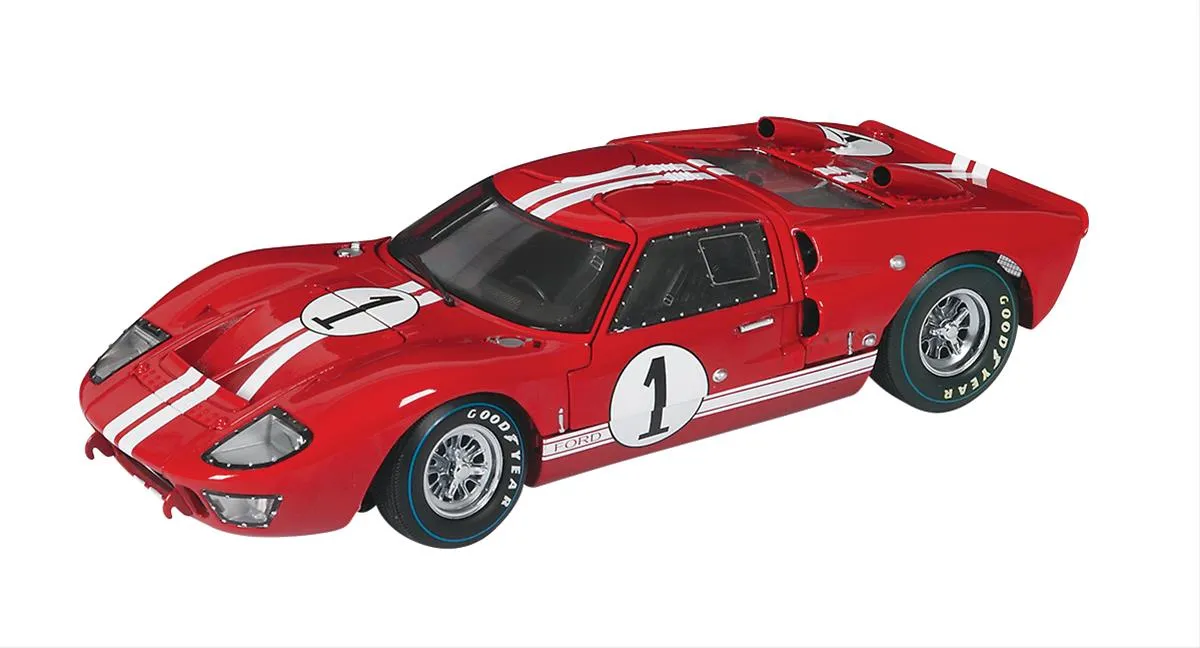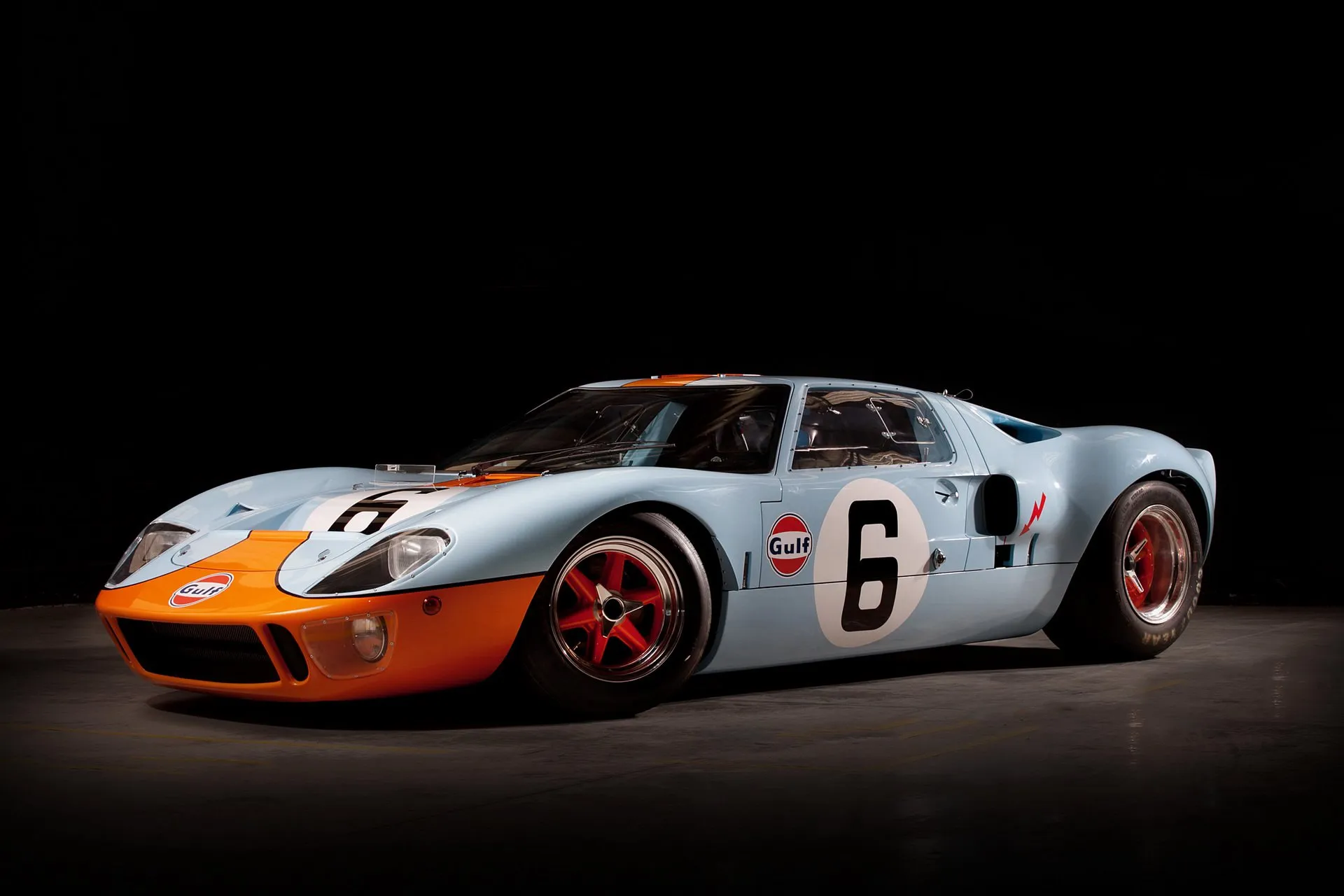What is the Ford GT40 Diecast?
The Ford GT40 diecast is a miniature replica of the iconic Ford GT40 race car. These models are popular among car enthusiasts and collectors, offering a tangible way to appreciate the history, design, and performance of this legendary vehicle. Diecast models are typically made from metal, often zinc alloy, and are known for their durability and intricate detailing. The scale varies, but common sizes include 1:18, 1:24, and 1:43, where the number represents the ratio of the model’s size to the actual car’s size. These models are not just toys; they are miniature works of art, capturing the essence of the GT40’s powerful presence and its significant contribution to automotive history. Collectors often seek out specific versions, such as those representing the Le Mans-winning cars, making each model a potential investment and a cherished piece of automotive memorabilia. The level of detail can be astonishing, with accurate representations of the engine, interior, and exterior, all contributing to the model’s appeal.
The Historical Significance of the Ford GT40
The Ford GT40 is more than just a race car; it’s a symbol of American automotive ambition and triumph. Developed with the sole purpose of dethroning Ferrari at the 24 Hours of Le Mans, the GT40’s creation was driven by Henry Ford II’s determination to achieve victory on the international racing stage. Its name, GT40, derived from Grand Touring and its height of 40 inches, speaks to its sleek, low-profile design engineered for speed and aerodynamics. The GT40’s impact on racing was immediate, with the car achieving numerous victories, including four consecutive wins at the 24 Hours of Le Mans from 1966 to 1969. This dominance not only solidified its place in racing history but also transformed the automotive landscape. The GT40 proved that American engineering and determination could compete and win against established European racing giants. Owning a diecast model of the GT40 allows collectors to connect with this rich history, celebrating a car that embodies the spirit of competition and innovation.
The Ford GT40’s Racing Legacy

The racing legacy of the Ford GT40 is etched in the annals of motorsport history. The car’s success at Le Mans is legendary, a testament to its superior design, engineering, and the skilled drivers who piloted it to victory. The GT40’s victories broke Ferrari’s winning streak and redefined the standards of endurance racing. The car’s aerodynamic profile and powerful engine were key factors in its performance, enabling it to reach high speeds and maintain those speeds over long distances. Beyond Le Mans, the GT40 achieved success in other races, further cementing its reputation as a dominant force in the racing world. Diecast models of the GT40 often commemorate these achievements, with specific models representing the winning cars from particular races and years. Collecting these models allows enthusiasts to relive the excitement and drama of these historic races, appreciating the skill of the drivers and the ingenuity of the engineers who made the GT40 an icon of speed and endurance. The legacy continues to inspire automotive enthusiasts and designers today, with the GT40’s influence visible in modern sports car designs.
The Engine and Horsepower of the Ford GT40
The heart of the Ford GT40 was its powerful engine, crucial to its racing success. Originally, the GT40 was equipped with a 4.7-liter (289 cubic inch) V8 engine, which delivered impressive performance. However, to compete at the highest level, Ford later upgraded the engine to a 7.0-liter (427 cubic inch) V8, significantly increasing its horsepower. The 7.0-liter engine, known for its robust power and reliability, was a key factor in the GT40’s dominance at Le Mans. This engine could produce over 485 horsepower, enabling the car to reach top speeds of over 200 mph. Diecast models often reflect these engine specifications, with detailed replicas of the engine bay that showcase the engineering marvel. For collectors, the engine specifications are a critical aspect of the model’s authenticity and value. Understanding the engine’s history and performance characteristics adds depth to the appreciation of these diecast models, connecting enthusiasts to the raw power and engineering prowess of the original GT40.
Horsepower Specifications in Diecast Models
While diecast models don’t have a functional engine, the representation of horsepower is a crucial aspect of their design. Manufacturers strive to accurately depict the engine specifications of the real GT40 in their models. This involves detailing the engine’s size, the number of cylinders, and sometimes, even the estimated horsepower. The level of detail varies depending on the scale and price of the model, but high-end diecast models often include highly accurate engine bays with intricate detailing. Collectors value models that accurately reflect the engine’s power output, as this adds to the model’s historical accuracy and appeal. Information about the horsepower of the actual car is often included in the model’s specifications or packaging. This detail allows collectors to appreciate the car’s performance capabilities and understand how the GT40 became a racing legend. Comparing different diecast models can also reveal the variations in engine specifications that occurred during the GT40’s production and racing career.
Factors that Influence Horsepower in Diecast

Several factors influence how horsepower is represented in diecast models. The scale of the model is a primary factor, as larger scales (like 1:18) allow for more detailed engine replicas. The materials used also play a role, with high-quality diecast metals allowing for finer details. The manufacturer’s commitment to accuracy and historical detail is crucial. Some manufacturers prioritize precision, ensuring their models accurately reflect the horsepower and engine specifications of the original car. The target audience also influences the level of detail; models aimed at serious collectors typically have more intricate engine representations than those designed as toys. Furthermore, the specific version of the GT40 represented in the diecast impacts the horsepower details. For example, a model of the Le Mans-winning GT40 Mk II will have different engine specifications than a street version or an earlier racing variant. Collectors should research the specific model they are interested in to ensure its engine and horsepower details align with the real car’s specifications.
The Impact of Scale and Materials
The scale and materials used in diecast models significantly impact the representation of the Ford GT40’s horsepower and overall detail. Larger scales, such as 1:18, provide more space for intricate engine detailing, allowing manufacturers to accurately replicate the engine’s size, components, and estimated horsepower. Smaller scales, like 1:43, require compromises in detail, making it more challenging to depict the engine’s specifications accurately. The materials used also play a crucial role. High-quality diecast metal allows for finer details, such as the engine’s wiring, exhaust systems, and other components. Lower-quality materials may result in a less detailed and less accurate representation of the engine. Collectors often prefer models with a high level of detail, as it enhances the authenticity and value of the diecast. The combination of scale and materials determines how effectively the model captures the essence of the Ford GT40’s horsepower and overall design. Choosing the right scale and material allows enthusiasts to fully appreciate the engineering and performance characteristics of this iconic race car.
Popular Ford GT40 Diecast Models and Their Horsepower
Several diecast models of the Ford GT40 are highly sought after by collectors, with each model representing a specific version of the car and its horsepower. The GT40 Mk II, particularly those that won at Le Mans, is a popular choice, often featuring highly detailed engine replicas of the 427 cubic inch V8. Other popular models include the GT40 Mk I, which often features a 289 cubic inch V8. The horsepower specifications of these models vary, reflecting the different engine configurations used during the GT40’s racing career. Manufacturers like Shelby Collectibles, Exoto, and Minichamps produce high-quality diecast models with exceptional engine detailing. When choosing a model, collectors should research the specific version represented, noting the engine type and estimated horsepower. This information is usually found in the model’s specifications or packaging. Collecting these models allows enthusiasts to assemble a comprehensive collection of Ford GT40s, each telling a part of the car’s legendary story and its impressive horsepower capabilities.
Finding Authentic Models with Accurate Horsepower Details

Finding authentic diecast models with accurate horsepower details requires careful research and attention. Start by identifying reputable manufacturers known for their high-quality and detailed models. Research the specific GT40 version you are interested in, noting its engine type and horsepower specifications. Check the model’s specifications, which often include details about the engine, scale, and materials. Read reviews from other collectors to assess the model’s accuracy and quality. Compare the model’s engine details with images and specifications of the real car to ensure accuracy. Purchase models from trusted retailers or directly from manufacturers. Verify the model’s authenticity by checking for official markings and documentation. Be wary of models that seem too cheap or lack detailed specifications, as they may not be authentic. By following these steps, you can build a collection of Ford GT40 diecast models that accurately reflect the car’s legendary horsepower and racing history. Collecting authentic models adds value to your collection and provides a more meaningful connection to automotive history.
Where to buy the Ford GT40 Diecast
Ford GT40 diecast models are available from a variety of sources. Online retailers such as Amazon, eBay, and specialized diecast model websites offer a wide selection of models. Brick-and-mortar hobby shops and model stores often carry a curated selection of Ford GT40 diecasts. Auction sites and collector forums are also great places to find rare or vintage models. When purchasing online, check the seller’s reputation and read reviews to ensure authenticity and quality. Compare prices from different retailers to find the best deal. Consider the shipping costs and return policies before making a purchase. Attending car shows and model conventions can also provide opportunities to buy diecast models from collectors and dealers. These events often feature rare and exclusive models. Regardless of where you buy, research the specific model you want and verify its authenticity before making a purchase. Building a collection of Ford GT40 diecasts is a rewarding hobby, and finding the right models is the first step to enjoying this passion.
